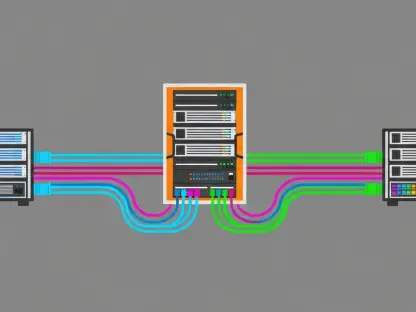DeepSeek, a Chinese artificial intelligence developer, has made a significant leap in the field of AI by open-sourcing its new large language model (LLM) family, the R1 series. This release is groundbreaking in the AI industry, presenting two primary algorithms, R1 and R1-Zero, which are optimized for complex reasoning tasks. The algorithms’ source code has been made available on Hugging Face, a widely-used platform for sharing AI models. This open-source approach not only signifies a move toward transparency but also aims to foster collaboration and innovation within the AI research community, allowing other developers and researchers to build upon DeepSeek’s work and push the boundaries of artificial intelligence further.
Advanced Capabilities and Unique Architecture
The R1 series stands out due to its advanced capabilities and unique architecture. The R1 model reportedly outperforms OpenAI’s o1 in multiple reasoning benchmarks, showcasing its superior reasoning abilities. This achievement highlights DeepSeek’s prowess in developing AI models capable of handling intricate tasks with a higher degree of accuracy and efficiency. On the other hand, R1-Zero, although not as capable as its counterpart, still represents a significant advancement in machine learning research due to its innovative training methods and potential applications.
Both R1 and R1-Zero utilize a mixture of experts (MoE) architecture, integrating 671 billion parameters. This architecture is made up of multiple neural networks, each specialized for different tasks. When a prompt is received, a routing mechanism intelligently directs the query to the most appropriate neural network. One of the remarkable benefits of the MoE architecture is its ability to reduce inference costs considerably. Instead of activating the entire 671 billion parameter model, only the relevant neural networks are activated, significantly lowering the number of parameters utilized for any given prompt to less than one-tenth. This efficiency not only reduces computational costs but also speeds up processing time, making the models more accessible for wider use.
Innovative Training Methods
DeepSeek’s approach to training R1-Zero diverges from traditional methods commonly employed for reasoning models. Typically, reasoning-optimized LLMs are trained using reinforcement learning (RL) and supervised fine-tuning (SFT). RL is a method where the AI learns through trial and error, while SFT enhances output quality by providing explicit examples of task performance. Interestingly, during the training of R1-Zero, DeepSeek omitted the SFT stage, relying solely on reinforcement learning. Despite this unconventional approach, the model was equipped with robust reasoning capabilities, such as breaking down complex tasks into simpler sub-steps.
Despite its innovative nature, R1-Zero’s output quality has some limitations, including issues like endless repetition, poor readability, and language mixing. These shortcomings prompted DeepSeek to develop R1, an enhanced version of R1-Zero. R1 was trained using a modified workflow that incorporated supervised fine-tuning, significantly improving its output quality. The combination of RL for developing reasoning capabilities and SFT for refining output demonstrates DeepSeek’s innovative approach to optimizing AI training processes.
Benchmark Performance
DeepSeek conducted a comparative analysis to evaluate R1’s performance against four popular LLMs across nearly two dozen tests. The results were compelling, with R1 outperforming OpenAI’s reasoning-optimized o1 LLM in several benchmarks. In instances where o1 outperformed R1, the performance gap was minimal, under 5%, underscoring R1’s competitive edge. One noteworthy benchmark where R1 excelled is the LiveCodeBench, a collection of programming tasks that are regularly updated with new problems. This particular benchmark is challenging for AI models, as it prevents reliance on pre-existing solutions available on the public web, thus showcasing the R1 series’ ability to adapt to novel tasks.
Additionally, DeepSeek has open-sourced distilled models derived from R1. These models, although less capable, are more hardware-efficient, making them suitable for a variety of applications with limited computational resources. The distilled models, ranging in size from 1.5 billion to 70 billion parameters, incorporate some of R1’s knowledge during training. Notably, the R1-Distill-Qwen-32B model outperformed the scaled-down OpenAI-o1-mini version across several benchmarks, highlighting its effectiveness despite its reduced size.
Contribution to the AI Community
DeepSeek, a prominent Chinese AI developer, has significantly advanced the artificial intelligence field by open-sourcing its latest large language model (LLM) family, the R1 series. This groundbreaking release features two primary algorithms, R1 and R1-Zero, which are finely tuned for complex reasoning tasks. Sharing these algorithms’ source code on Hugging Face—a popular platform for AI models—marks an important step towards transparency and collaboration in the AI industry. By making the R1 series open-source, DeepSeek encourages both collaboration and innovation among AI researchers and developers worldwide. This move allows others to build on DeepSeek’s foundational work, fostering a communal push to further the boundaries of what artificial intelligence can achieve. The release of the R1 series is not just a technical achievement but also a strategic move to accelerate progress and share advancements in AI, thereby enriching the global research community and democratizing access to cutting-edge AI tools.









